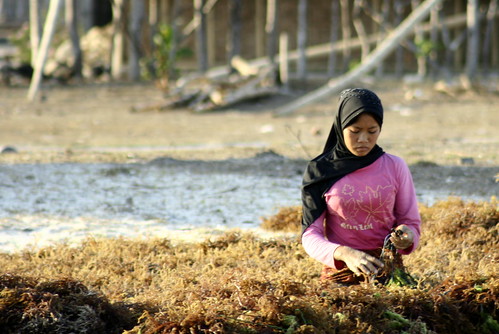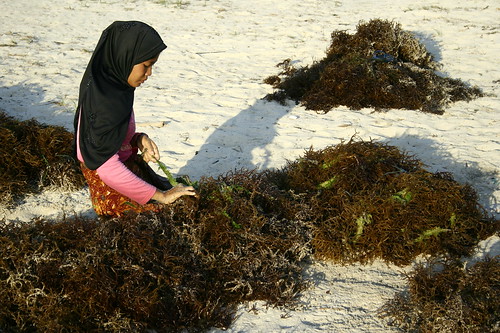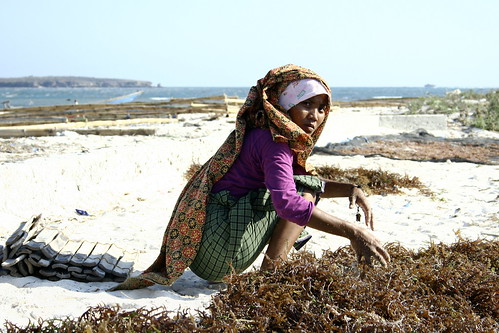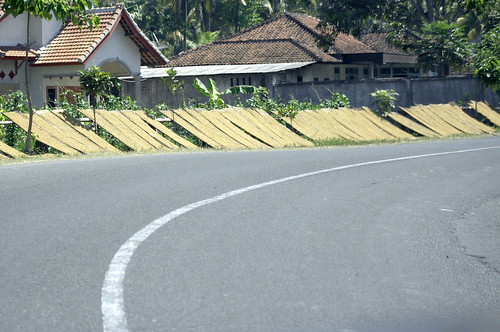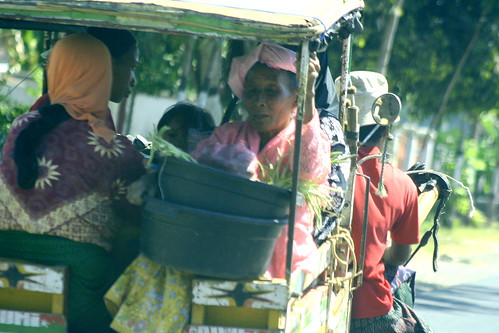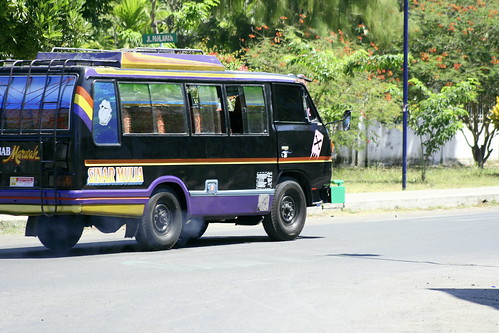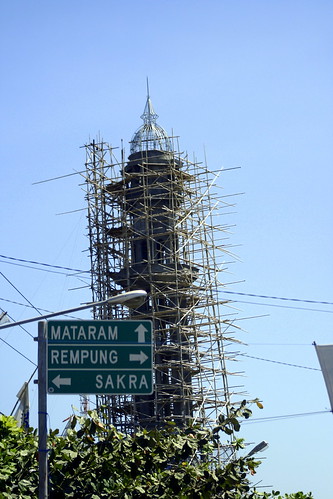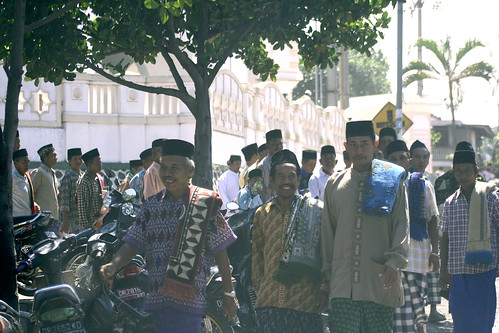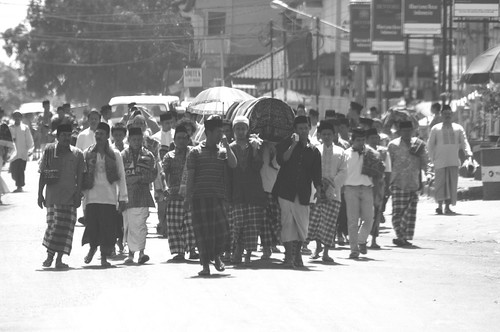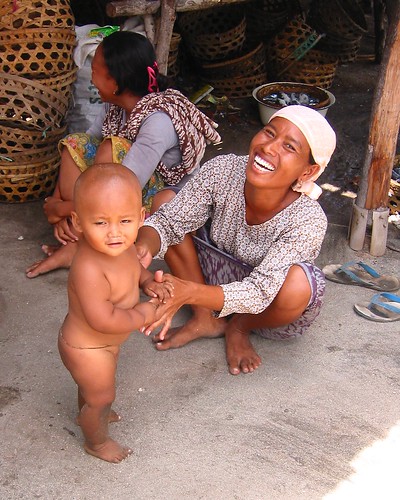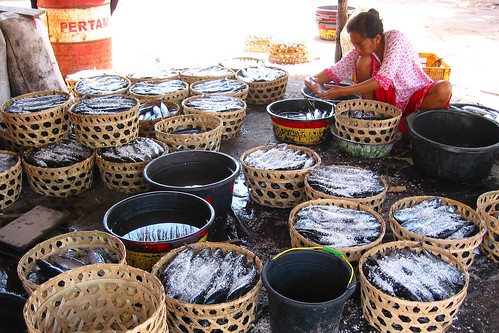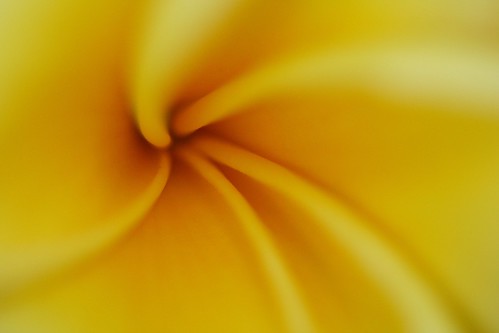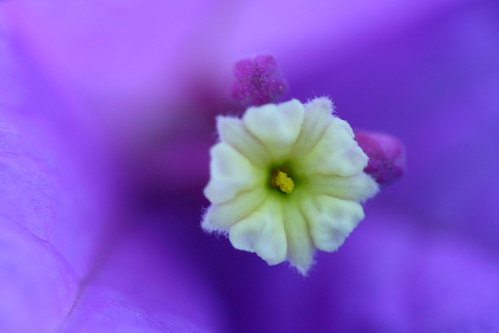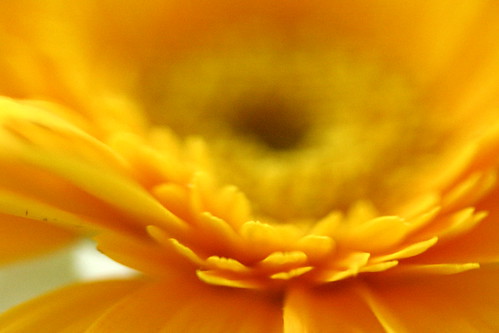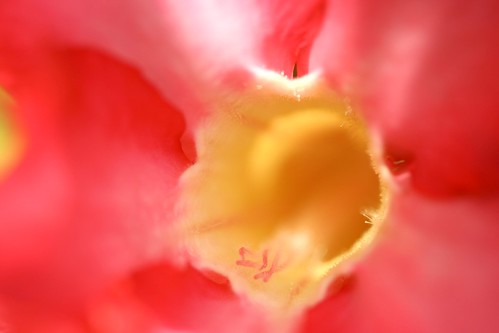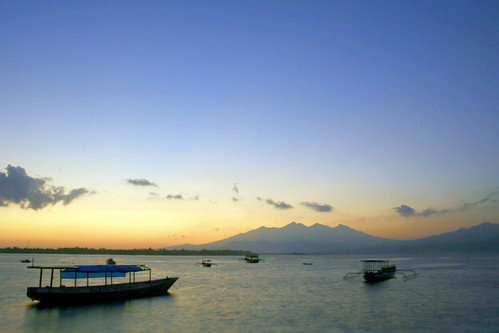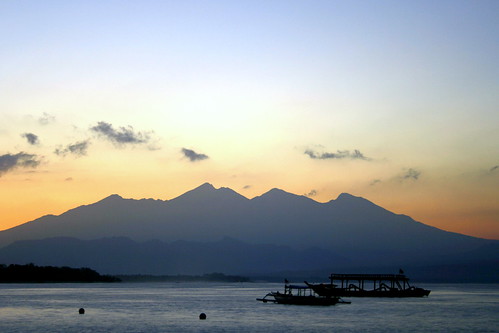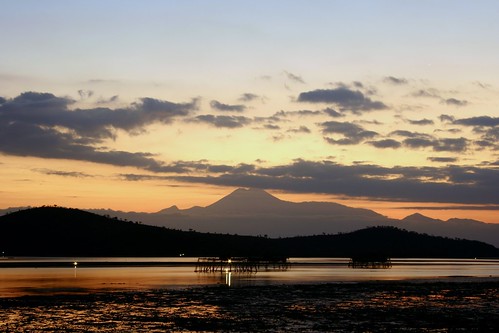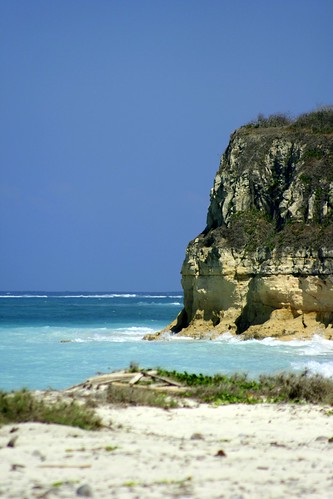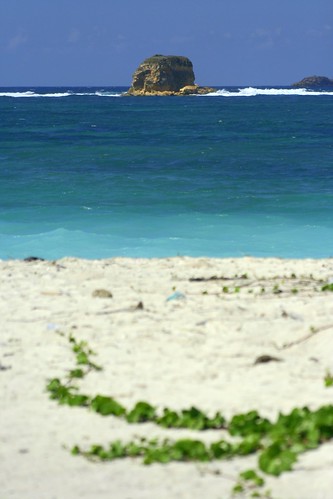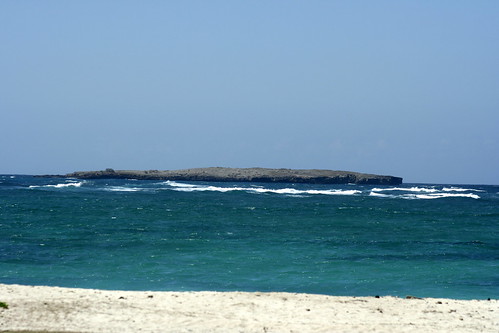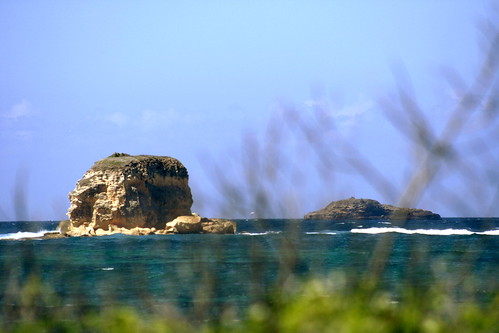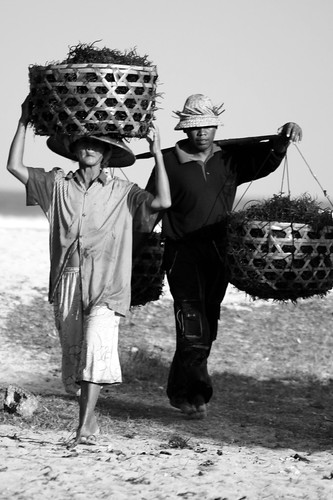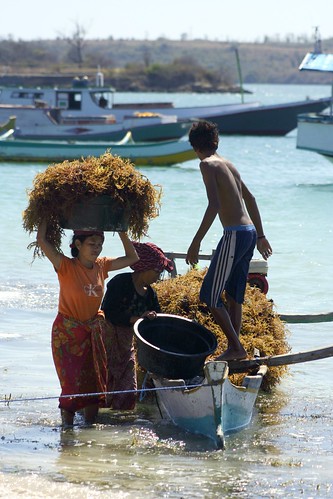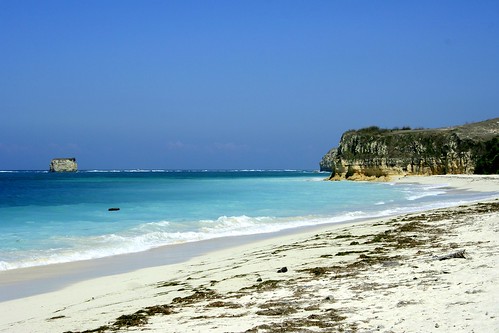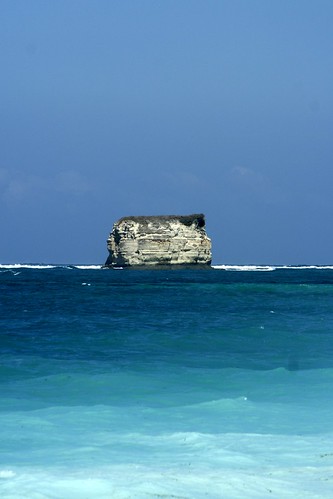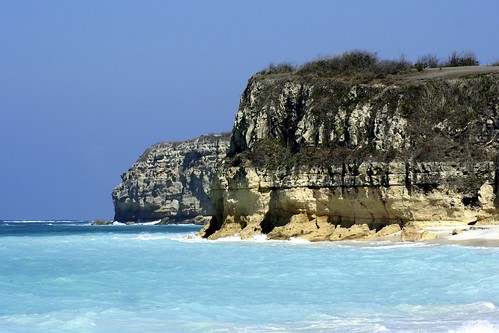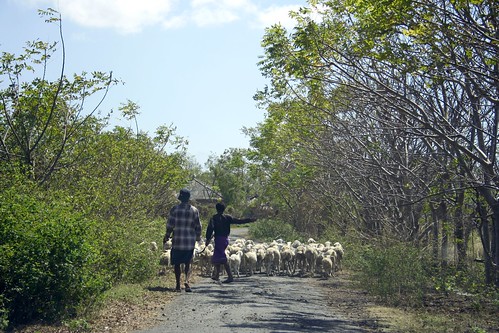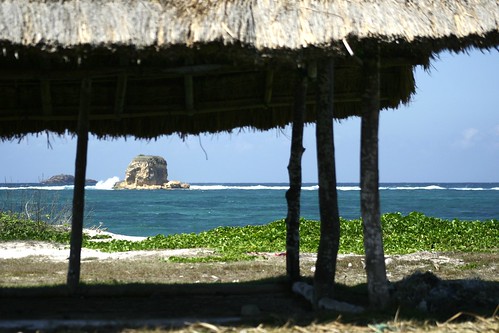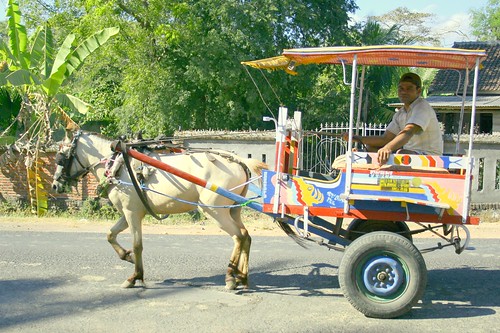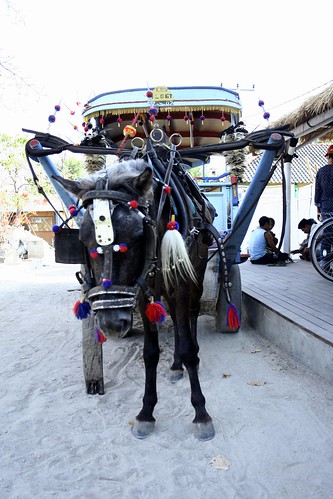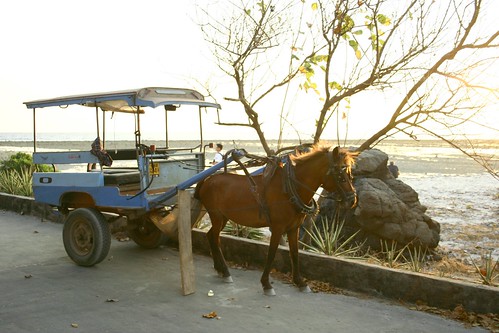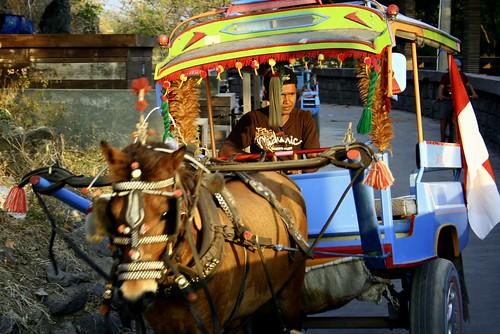continued from Gili Trawangan escapade, part 1
For one afternoon and a night in August, I willingly got “stranded” in Gili Trawangan. I was coming off from work and the Gilis are only an hour from Mataram, the capital of Lombok. It was past 3PM when we got there, which left me just enough to see what the island has to offer.
Gili Trawangan has a sophisticated feel. August is high season so visitors mostly were white although there was a sizeable presence of domestic tourists. As expected of a really small island, the place is already peppered with hotels, villas, restaurants, bars, and diveshops and yet, it still is spilling with empty sand and undeveloped beachfronts that I bet more commercialization is yet to come.
After finishing our thirty minute tour, on a horse-drawn carriage called cidomo, we settled for refreshments in the bar in front of Villa Ombak, our hotel. The island is hot as it barely has vegetation over its predominantly sandy terrain so we wallowed in the comfort of our ice cream and sweets.
The sun was coming down slowly. At 5:30PM, the cidomo (horse-drawn carriage) we hired earlier came back to take us to the nearby Sunset Bar to, what else, view the sunset.
The Sunset Bar lies at the southwestern tip of the island, facing Lombok Straight and the island of Bali. The bar sprawls widely over an empty sand beach, just below a small hill. The architecture is modern Asia, unobstrusive in its all wood structure, and boasts a sunken watering hole station open only in the late afternoon. It also offers a wide promontory deck with benches that anyone can freely partake regardless of your intention to buy a drink or not.
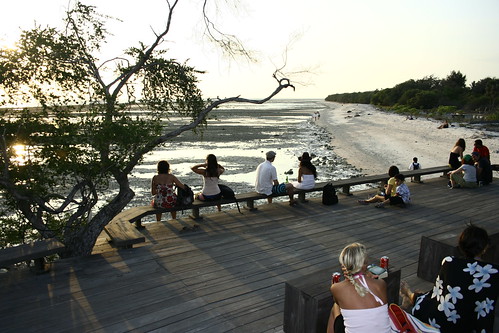
Canon EOS 350D Digital, 1/200s, f/5.0, 18mm, ISO 100
5:45PM, waiting for sunset at the Sunset Bar balcony, Gili Trawangan, Lombok, Nusa Tenggara Barat, Indonesia
Sunset that day was 6:15 so we had ample time to observe the world. Slowly, people arrived, some on foot, others on cidomos. Others were on bicycles or on horseback.
I’ve done countless sunset photographs over the years and I thought it would be fun getting something different. Enviously, I looked at the hill over the bar but it was a private hotel and surely I could not gain access. A silhouette of the cosmopolitan bar could work but it sat too near the hill to shoot it from any appreciable distance. Ditto with the cidomos parked nearby. There was a large rock beside the bar but it got too much human traffic.
By 6PM, it became obvious that it would just be the sun and the horizon. As the clock clicked, I took several sunset photographs on the fly, with whatever came to my fancy. Here is then my own photographic countdown of the sunset at Trawangan.
6:12PM, 3 minutes before sunset
This is a pretty standard shot. I used the tidal flats to create the horizontal lines. That said, the blush of yellow crowning the fully circle of the sun is marvelous even to my sunset-cynical eyes.
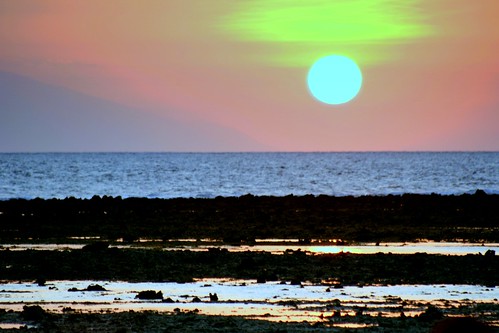
Canon EOS 350D Digital, 1/80s, f/5.6, 255mm, ISO 100, +2/3EV
6:12PM, the sun setting down over Lombok Straight, at Gili Trawangan, Lombok, Nusa Tenggara Barat, Indonesia
6:13PM, 2 minutes before sunset
I decided to move and saw that my friends have settled on the sand. The scene looked romantic and they did not even notice that I took a photo.
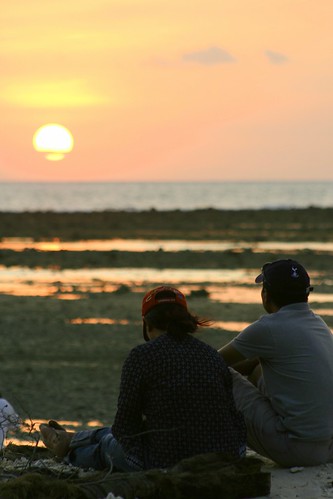
Canon EOS 350D Digital, 1/80s, f/5.6, 170mm, ISO 100, -1/3EV
6:13PM, viewing the sunset at Gili Trawangan, Lombok, Nusa Tenggara Barat, Indonesia
6:14PM, a minute before sunset
The sun was sinking quick. Suddenly a girl in hijab came out from nowhere and walked across the beach. There was little time to move forward so I could not get a tighter shot. The photo below is a crop to compensate for this.

Canon EOS 350D Digital, 1/160s, f/5.0, 210mm, ISO 100, -1/3EV
6:14PM, sundown at Gili Trawangan, Lombok, Nusa Tenggara Barat, Indonesia
6:15PM, sunset
Just when the sun appeared to touch the horizon, I decided to get closer to the beach. The exact moment of sundown is always magical. Enough said.
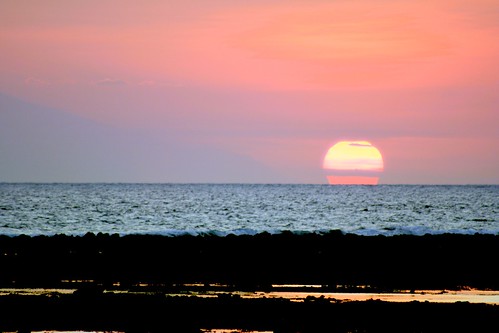
Canon EOS 350D Digital, 1/125s, f/5.6, 300mm, ISO 100, -1/3EV
6:15PM, the moment of sundown at Gili Trawangan, Lombok, Nusa Tenggara Barat, Indonesia




